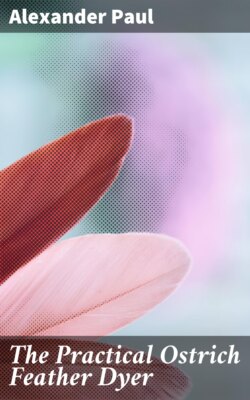Читать книгу The Practical Ostrich Feather Dyer - Alexander Bartlett Paul - Страница 12
На сайте Литреса книга снята с продажи.
ARCHIL.
ОглавлениеAbout the thirteenth century an Italian, Tederigi by name, during travels in the East observed the tinctorial powers of a certain class of plant of low organization, called lichens, and introduced the color into Europe under the name of archil. For this discovery he was amply rewarded by the government, besides amassing a large fortune, as the supply for years came from Florence. At first the weeds were collected on the shores of various islands in the Mediterranean; but on the discovery of the Canary Islands, in 1402, large quantities were obtained from there. Later on they were imported from Cape Verde; and now they are also obtained from Madagascar, Zanzibar, Angelo and Lima and various localities in South America.
The weed does not contain any coloring matter already formed, but under the influence of ammonia and the oxygen of the atmosphere gives rise to archil. The manufacture of archil was for centuries carried on in wooden troughs. Two hundred parts lichens were placed in the trough together with about two hundred and forty parts of decomposed urine, and the mixture well worked every three hours for forty-eight hours. Five parts of slaked lime, one part of arsenious acid and one and one-quarter parts of alum were then added, and the whole well stirred and allowed to ferment. The stirring was repeated, from time to time, for a month. The contents of the trough were then removed to casks, and left to stand, thus improving the color. Archil is also one of the most important dyestuffs used by the feather dyer, principally entering into the composition of garnet, plum, brown, etc. Contact with acid will destroy its coloring virtues by turning it a dull brown red.
